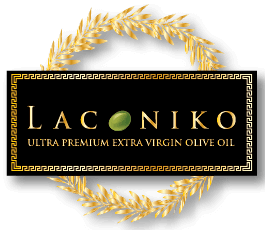News
The Truth About Balsamic Vinegar: Why Modena’s Authentic Elixir Stands Apart From Commercial Versions
Diamantis Pierrakos —
When it comes to balsamic vinegar, not all bottles are created equal. If you've ever tasted rich, velvety balsamic vinegar that seemed to coat your tongue in complex layers of flavor, chances are you experienced the real deal: Aceto Balsamico Tradizionale di Modena. But most people are more familiar with the mass-produced versions lining supermarket shelves—thin, acidic, and often sweetened with additives.
So what sets authentic balsamic vinegar from Modena, Italy apart from the commercial alternatives? Let's break it down.
1. Origin and Protected Status
Authentic balsamic vinegar—labeled Aceto Balsamico Tradizionale di Modena DOP—is protected under the European Union’s Denominazione di Origine Protetta (DOP) certification. This means it must be produced, aged, and bottled in Modena using specific traditional methods and local ingredients. Balsamic Vinegar of Modena can only be produced in the provinces of Modena and Reggio Emilia. In this area is found an abundance of grapes with just the right concentration of sugars and acidity.
By contrast, commercial balsamic vinegar (often labeled simply “balsamic vinegar” or “Balsamic Vinegar of Modena IGP”) may be made elsewhere and often includes shortcuts in both process and ingredients. The IGP (Indicazione Geografica Protetta) label is still regulated, but far less strictly.
2. Ingredients and Additives
Traditional balsamic vinegar uses only one ingredient: cooked grape must, typically from Trebbiano or Lambrusco grapes. No caramel, thickeners, or artificial flavors. It ferments naturally and develops its richness over time.
Commercial balsamic vinegars, on the other hand, often contain wine vinegar, caramel coloring, sugar, and even preservatives to simulate the appearance and taste of aged balsamic in a fraction of the time.
3. Aging Process
Authentic balsamic vinegar is aged for a minimum of 12 years in a series of wooden barrels—often oak, cherry, mulberry, or chestnut. Over the years, it becomes denser and more concentrated as it evaporates and absorbs flavor from the wood.
Many commercial balsamic vinegars are aged for just a few months, if at all. Some undergo rapid industrial aging, while others skip it entirely and use additives to mimic the deep, glossy texture of traditional balsamic.
4. Flavor and Texture
If you've tasted traditional balsamic, you’ll remember it. It’s viscous, syrupy, and layered—a balance of sweet, tart, and umami. It’s not just a condiment; it’s an experience, often served in drops on cheese, fruit, or even desserts.
Commercial balsamic vinegars tend to be watery, overly acidic, and one-dimensional. They might do the trick in a salad dressing, but they lack the complexity and elegance of the real thing.
5. Price and Presentation
You’ll notice the difference at the register. A 100ml bottle of Aceto Balsamico Tradizionale di Modena DOP can cost upwards of $100 or more. It often comes in a specially designed bottle, sealed with a wax top and certification.
Supermarket balsamics are priced to move—often $3 to $10 for a full bottle—and packaged for volume sales, not craftsmanship.
6. The Role of Balsamic Condiments ("Condimenti")
Between the extremes of traditional DOP balsamic and mass-market imitations lies a fascinating middle ground: balsamic condiments. Often crafted by the same artisans who produce traditional balsamic, condimenti are made using similar ingredients (usually cooked grape must) and aging techniques but fall outside strict DOP regulations.
Why? It might be because they are aged for a non-standard number of years (e.g., 8 or 15 instead of the regulated 12, 25, or more) or other reasons falling out of the DOP regulations.
The result? High-quality, artisan products that are more affordable and versatile than traditional balsamic, yet far superior to commercial versions. They’re perfect for everyday use—drizzling on roasted vegetables, fresh mozzarella, grilled meats, or even strawberries.
When buying a balsamic condiment, look for:
-
A high percentage of cooked grape must
-
No artificial thickeners or sweeteners
-
Aging in wooden barrels
-
Labels from reputable producers sourcing from Modena
What Is White Balsamic Vinegar?
White balsamic vinegar—condimento bianco—is a lighter, more delicate cousin of traditional balsamic. It’s made from white Trebbiano grapes, just like the classic version, but the must is not caramelized and is often gently filtered to preserve a golden or pale amber hue.
It’s typically aged for a shorter period in stainless steel barrels, rather than the wood barrels used in traditional aging. This preserves its light color and crisp, fruity flavor profile.
Key characteristics:
-
Mild, slightly sweet acidity
-
Golden in color, not dark brown
-
Great for use in light-colored dishes—salads, seafood, vinaigrettes—where traditional balsamic might overpower the visual or flavor balance
________________________________________________________________________________________________
How to Spot the Real Thing
Look for these key indicators:
-
“Aceto Balsamico Tradizionale di Modena DOP” for the highest quality
-
A small, bulb-shaped 100ml bottle with a wax seal for DOP
-
No ingredients other than cooked grape must (for DOP) or mostly grape must (for condiments)
-
Pricing that reflects the time and care involved—generally starting around $20 and climbing to over $50 for DOP
Final Thoughts
Balsamic vinegar from Modena is more than just a condiment—it’s a product of history, geography, and generations of craftsmanship. Whether you’re savoring the complexity of a traditional DOP vinegar or discovering the everyday elegance of a well-made balsamic condiment, choosing Modena means choosing authenticity.
Want to experience it for yourself? Explore our curated selection of authentic Laconiko balsamic vinegars and condiments from Modena available in different popular flavors such as: Chocolate, Fig, Walnut, Strawberry, Lemon, Truffle, etc., and elevate your kitchen with centuries of tradition in every drop.
